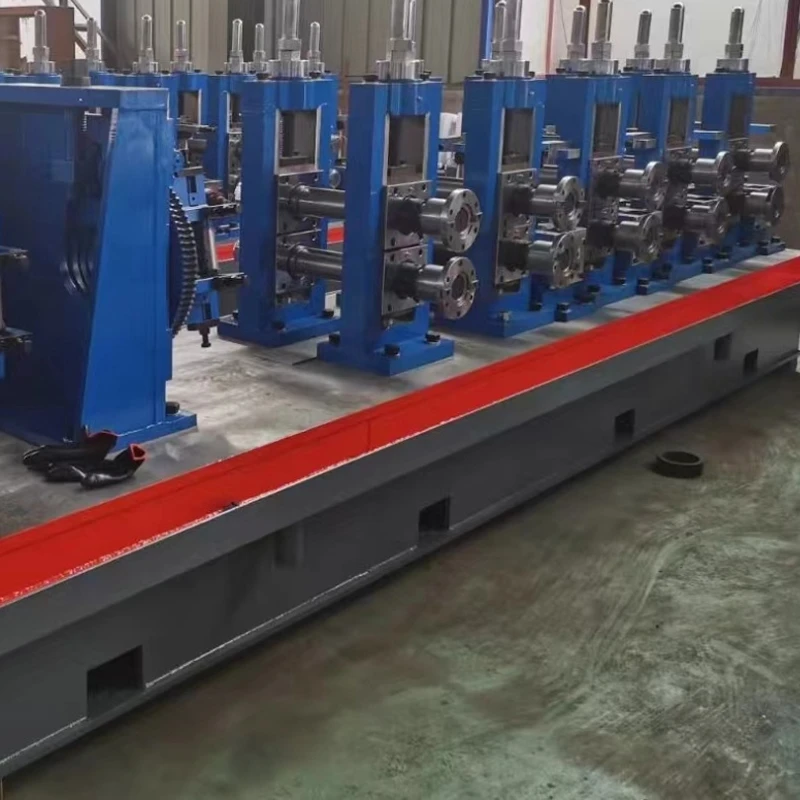roll forming machine die
Understanding Roll Forming Machine Die Key Concepts and Applications
Roll forming is a highly efficient manufacturing process that involves shaping metal sheets or strips into desired profiles by passing them through a series of rollers. One of the critical components of this process is the roll forming machine die, which plays a vital role in dictating the final shape and quality of the product. In this article, we will explore the intricacies of roll forming machine dies, their design, applications, and significance in various industries.
What is a Roll Forming Machine Die?
A roll forming machine die refers to the set of specialized tools that are used within a roll forming machine to shape metal into a predetermined profile. The die consists of a series of rollers configured in a particular sequence, each designed to progressively bend, stretch, and shape the metal as it passes through. The precision and accuracy of these dies are crucial, as they ultimately determine the physical characteristics of the final product, such as thickness, width, and contour.
Design Considerations
The design of a roll forming die is a complex task that requires consideration of several factors
1. Material Properties Different metals can exhibit varied mechanical properties, such as tensile strength, ductility, and yield strength. Understanding these properties is essential for selecting the appropriate die material and design to avoid issues like cracking or deformation.
2. Profile Requirements The intended application will dictate the profile design. For instance, components used in the construction industry may require robust shapes for load-bearing purposes, while automotive parts may need lightweight yet rigid profiles.
3. Roller Configuration The arrangement and number of rollers significantly impact the efficiency and effectiveness of the forming process. A well-designed configuration will enable smooth transitions and uniform shaping throughout the roll pass.
roll forming machine die

4. Production Volume The design process may also vary depending on whether the production is for small batches or high-volume manufacturing. Dies designed for high volumes are typically more durable but may have a higher upfront cost.
Applications of Roll Forming Machine Dies
Roll forming machine dies are used across a wide range of industries, including
1. Construction In the construction sector, roll forming is commonly used to produce components such as steel studs, tracks, and roofing sheets. The precision of the die ensures that these components fit together seamlessly and function effectively.
2. Automotive The automotive industry relies on roll forming dies to create structural components, brackets, and other intricate parts that require high strength and lightweight characteristics.
3. HVAC Heating, ventilation, and air conditioning systems often utilize roll-formed parts such as ductwork and supports. The uniformity provided by roll forming dies ensures optimal airflow and system efficiency.
4. Furniture Furniture manufacturing can also benefit from roll forming, especially for making frames and supports that are both aesthetically appealing and structurally sound.
Conclusion
The roll forming machine die is a critical element in the roll forming process, significantly influencing the quality and functionality of the final product. By carefully considering design factors and applications, manufacturers can produce high-quality components that meet the needs of various industries. As technology continues to advance, the innovation in die design and materials will further enhance the capabilities of roll forming, leading to more efficient production processes and even more complex shapes. Understanding the role of roll forming machine dies is essential for anyone involved in metal fabrication or manufacturing, as it directly ties into the efficiency and effectiveness of the entire production process.
-
High Frequency Straight Seam Welded Pipe Production Line-BzZhou Xinghua Machinery Equipment Manufacturing Co., LTD.|line pipe steel&welded gas pipeNewsJul.30,2025
-
High Frequency Straight Seam Welded Pipe Production Line-BzZhou Xinghua Machinery Equipment Manufacturing Co., LTD.|High Precision&Automated SolutionsNewsJul.30,2025
-
High Frequency Straight Seam Welded Pipe Production Line - BzZhou Xinghua Machinery Equipment Manufacturing Co., Ltd.NewsJul.30,2025
-
High Frequency Straight Seam Welded Pipe Production Line-BzZhou Xinghua Machinery Equipment Manufacturing Co., LTD.|Precision Welding, High EfficiencyNewsJul.30,2025
-
High Frequency Straight Seam Welded Pipe Production Line|BzZhou Xinghua|Precision Welding&EfficiencyNewsJul.30,2025
-
High Frequency Straight Seam Welded Pipe Production Line - BzZhou Xinghua|Precision Engineering&EfficiencyNewsJul.30,2025


